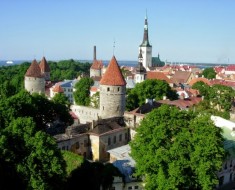This is one of the loveliest places to visit in this most lovely part of Italy. The city was founded by the Etruscans who changed the face of central Italy through their use of irrigation, reclaiming previously un-farmable land, and their custom of building their settlements in heavily armoured hill-forts. Later it became a Roman settlement, although it was not until the Lombards invaded Siena and the surrounding territory in the 700’s that it became a prosperous trading post, later savaged by the Black Death in the fourteenth century. It took years before the town was re-populated and recovered its commercial and social life, as was true of much of Europe after that terrible scourge.
Siena became a major centre of money lending and an important player in the wool trade. It has an interesting history of governance by the Church, by the nobility, and by the community, having its own written constitution in 1179. As a Republic it managed mostly to get the balance right between the nobility and the common people; the city’s rivalry with Florence being one of the uniting factors that kept the Consuls together.
Its fascinating collection of buildings gathered around the stunning Piazza del Campo, date from this period.
This enormous city space – regarded as one of the most beautiful in the world – became and remains the centre of secular life and much of the city, built on a collection of small hills, was planned to lead in and out of the square, so that as you move around the city your eyes keep on being drawn to it. This is where the market is held and sporting festivals such as the famous – and for accidents, notorious – annual horse racing event.
Siena’s university, founded in 1203 and famed for its faculties of law and medicine, is still among the most important Italian universities, respected for its humanist disciplines.
Siena rivalled Florence in the arts through the 13th and 14th centuries and the striking mural of «Good Government» (and its antithesis) by Ambrogio Lorenzetti in the wonderful Palazzo Pubblic, or town hall, is a magnificent example of late-Medieval and early Renaissance art as well as a representation of the utopian vision of urban society as conceived during that period.
This is a beautiful and lively city and we were greatly impressed with it on our visit a few years ago.
Bryan



